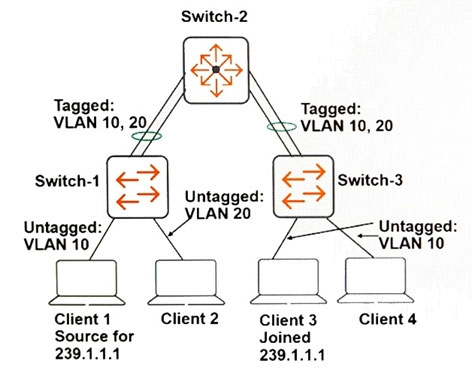Correct Answer: CIn this scenario, Client 1 is sending multicasts to 239.1.1.1. Switch-2, which has IGMP enabled, shows that Client 3 has joined the multicast group for 239.1.1.1 on VLAN 10. Although Switch-2 supports IGMP, Switch-1 and Switch-3 do not have IGMP or PIM enabled, causing multicast traffic to be broadcast to all ports within the same VLAN. Therefore, any other clients on VLAN 10 will also receive the multicast traffic. Thus, both Client 3 and Client 4, which are on the untagged VLAN 10, will receive the multicasts, while Client 2, on VLAN 20, will not. Hence, the correct option is Client 3 and Client 4 but not Client 2.

